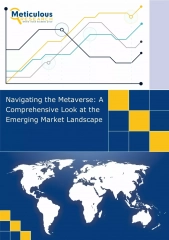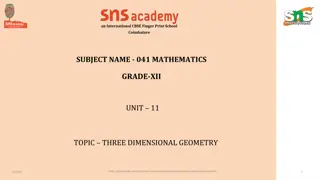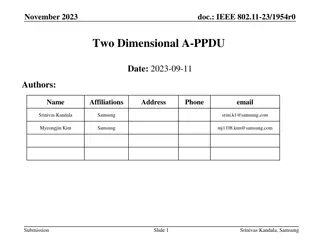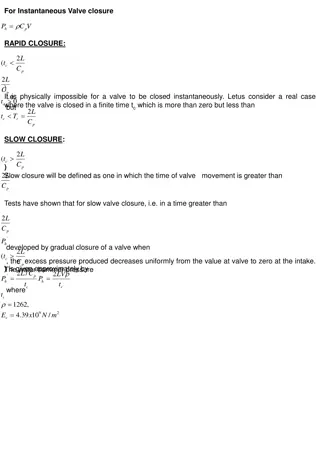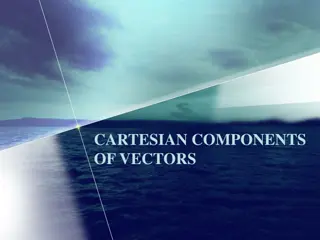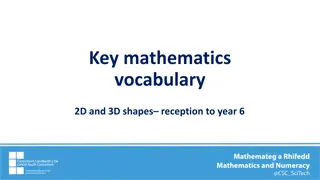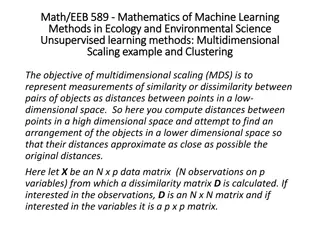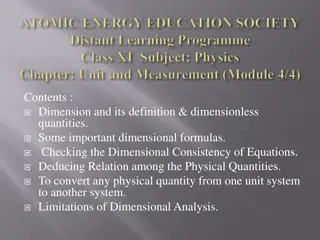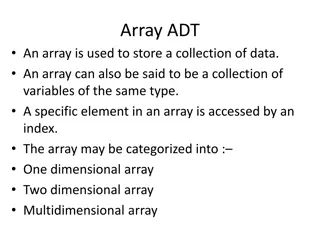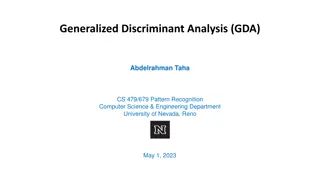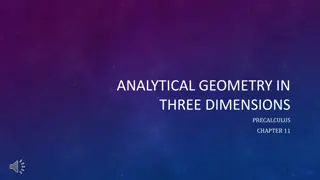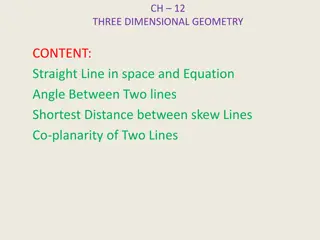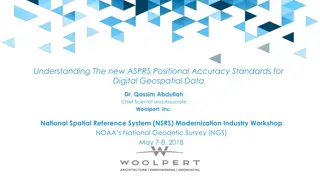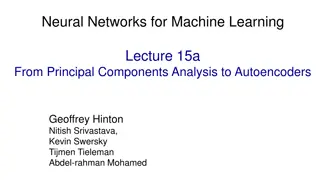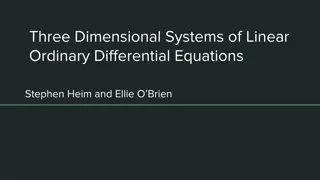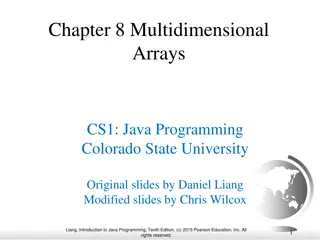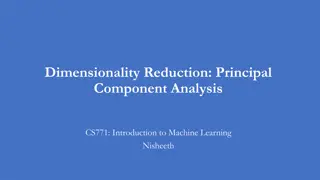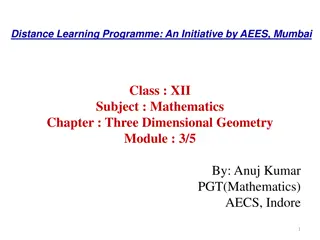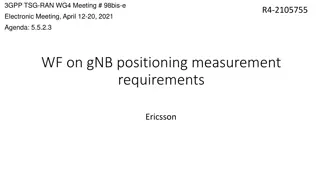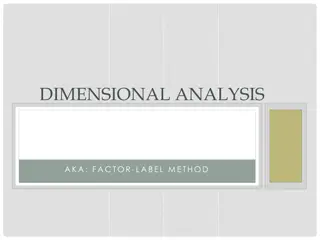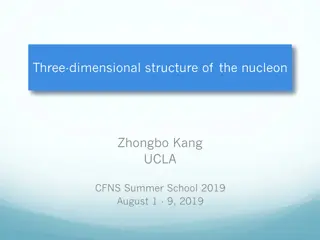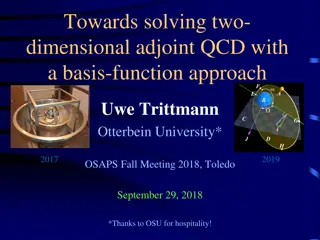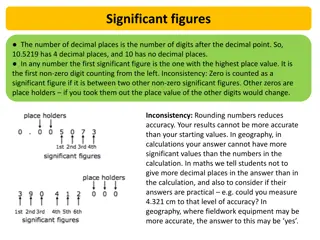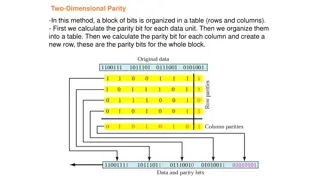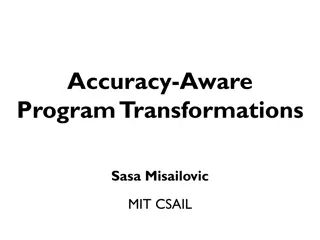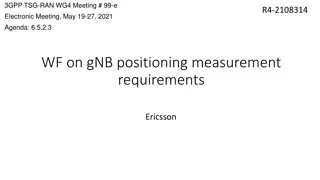Navigating the Metaverse: A Comprehensive Look at the Emerging Market Landscape
Gaming is one of the major sectors that use metaverse to offer a next-generation gaming experience to users. Metaverse provides users with a three-dimensional environment instead of a two-dimensional experience, where the interaction among users and in-built gaming elements are more personal.
1 views • 3 slides
Understanding Impression Evidence Collection in Forensic Investigations
Impression evidence plays a crucial role in forensic investigations, with examples including shoeprints, tool marks, tire tracks, bite marks, and riffling marks on bullets. The quality of impressions depends on various factors like the object making the impression, surface conditions, and the materi
1 views • 21 slides
Understanding Three-Dimensional Geometry Concepts in Mathematics
Explore the concepts of three-dimensional geometry in mathematics, including direction angles, direction cosines, direction ratios, and equations of lines in space. Learn how to find direction cosines and ratios of a line and understand the properties of X, Y, and Z axes. Gain insights into the uniq
1 views • 15 slides
Two-Dimensional A-PPDU for Low Latency in UHR Networks
This document discusses the proposed two-dimensional (2D) A-PPDU as a solution for supporting low-latency applications in UHR networks. It delves into the details of 2D A-PPDU for downlink, focusing on the ability to insert PPDUs within a PPDU, aiming to reduce latency in UHR environments by enhanci
0 views • 17 slides
Accuracy of Digital Impressions for Implant-Supported Fixed Dental Prostheses
The study presented by Dr. Roma Pandit explores the accuracy of digital impressions for three-unit and four-unit implant-supported fixed dental prostheses using a novel device. Digital impressions offer advantages over conventional methods, but challenges exist in scanning edentulous areas accuratel
0 views • 13 slides
Techniques in Fluid Mechanics: Dimensional Analysis
Dimensional analysis is a powerful tool used in engineering to investigate problems in fluid mechanics. By identifying key factors in physical situations, dimensional analysis can establish relationships between them, providing qualitative solutions that can be further refined experimentally. This t
0 views • 5 slides
Understanding Earth's Representation: Globe vs. Map
Explore the representations of Earth through globes and maps, understanding their differences, limitations, and significance. Discover the world of cartography, from three-dimensional globes to two-dimensional maps, and learn about the history and development of map-making from ancient times to mode
0 views • 13 slides
Introduction to Cartesian Components of Vectors in Two-Dimensional Space
Exploring Cartesian components of vectors in a two-dimensional coordinate frame using unit vectors i and j. Learn how to express vectors, add them using the triangle law, use column vector notation, and find resultant vectors. Understand position vectors in terms of coordinates. Examples and diagram
0 views • 16 slides
Mastering 2D and 3D Shapes Vocabulary from Reception to Year 5
Explore essential 2D and 3D shapes vocabulary for students from reception to Year 5, encompassing a variety of shapes such as cubes, pyramids, spheres, cones, cylinders, and more. The comprehensive list includes both two-dimensional and three-dimensional shapes, providing a solid foundation for unde
3 views • 9 slides
Understanding Multidimensional Scaling and Unsupervised Learning Methods
Multidimensional scaling (MDS) aims to represent similarity or dissimilarity measurements between objects as distances in a lower-dimensional space. Principal Coordinates Analysis (PCoA) and other unsupervised learning methods like PCA are used to preserve distances between observations in multivari
0 views • 21 slides
Understanding Dimensional Analysis in Physics
Dimensional analysis in physics involves defining dimensions of physical quantities, determining dimensionless quantities, checking dimensional consistency of equations, converting units, and exploring the limitations and applications of dimensional analysis. By understanding dimensions and dimensio
0 views • 14 slides
Understanding Non-Dimensional Numbers in Fluid Mechanics
Non-dimensional numbers play a crucial role in understanding fluid motion. This includes Reynolds Number for inertia and viscous forces, Froude Number for gravity effects, Cauchy Number for compressible flows, and Mach Number for elasticity forces. These numbers help in analyzing pipe friction, flow
1 views • 10 slides
Understanding Arrays: Overview and Examples
Arrays are essential data structures used to store collections of data in programming. They can be one-dimensional, two-dimensional, or multidimensional, accessed by specific indices. Learn about linear arrays, indexing methods, and two-dimensional arrays through detailed explanations and visual rep
1 views • 33 slides
Understanding Generalized Discriminant Analysis (GDA) in Pattern Recognition
Generalized Discriminant Analysis (GDA) is a nonlinear form of Linear Discriminant Analysis (LDA) that utilizes kernel methods to find discriminatory features for optimal class separability. LDA aims to maximize the between-class covariance matrix while minimizing the within-class covariance matrix.
2 views • 17 slides
Exploring Three-Dimensional Geometry in Precalculus
Delve into the world of analytical geometry in three dimensions with a focus on plotting points, calculating distances and midpoints, graphing spheres, and understanding vectors in space. This chapter covers essential concepts such as 3D coordinate systems, equations of spheres, vector operations, a
0 views • 29 slides
Three-Dimensional Geometry: Direction Cosines and Angles
Understanding direction cosines and angles in three-dimensional geometry is crucial for determining the orientation of lines in space. By calculating direction cosines, we can find the angles a line makes with the positive directions of the X, Y, and Z axes. This knowledge helps in various geometric
0 views • 18 slides
Evolution of ASPRS Positional Accuracy Standards for Geospatial Data
New technological advancements have prompted the need for updated ASPRS positional accuracy standards for digital geospatial data. Legacy standards from the 1990s are no longer sufficient given the shift towards modern mapping technologies. The new era of mapping involves factors like camera calibra
0 views • 21 slides
Understanding Principal Components Analysis (PCA) and Autoencoders in Neural Networks
Principal Components Analysis (PCA) is a technique that extracts important features from high-dimensional data by finding orthogonal directions of maximum variance. It aims to represent data in a lower-dimensional subspace while minimizing reconstruction error. Autoencoders, on the other hand, are n
0 views • 35 slides
Diagnostic Test Accuracy Study: Design and Implementation
This content delves into the pathway of a diagnostic test from development to clinical application, focusing on the basic concepts of diagnostic test accuracy, study design, the 2x2 table, and key terminology. It discusses the importance of study design in assessing diagnostic accuracy, including fa
0 views • 16 slides
Understanding Three-Dimensional Systems of Linear Ordinary Differential Equations
Explore the concepts of three-dimensional linear systems of ordinary differential equations, including techniques for finding eigenvalues and the general solutions. Learn how to determine characteristic polynomials for 3x3 matrices and identify sink, source, and saddle points in 3D systems.
0 views • 20 slides
Understanding Two-Dimensional Arrays in Java Programming
Explore the concept of two-dimensional arrays in Java programming through examples and illustrations. Learn how to declare, create, and initialize two-dimensional arrays efficiently to represent matrices or tables. Discover the benefits of using multi-dimensional arrays for data organization and man
1 views • 25 slides
Understanding One-Dimensional Arrays in C Programming
Arrays in C are collections of variables of the same data type that allow storing a group of data. This article covers the basics of one-dimensional arrays in C, explaining syntax, declaration, initialization, and accessing elements. It also provides examples and a sample program to demonstrate arra
1 views • 26 slides
Understanding Dimensionality Reduction and Principal Component Analysis
Dimensionality reduction techniques like Principal Component Analysis (PCA) help in transforming high-dimensional data into a lower-dimensional space, leading to efficient storage and better understanding of underlying patterns. By capturing maximum variance in the data, PCA learns projection direct
5 views • 16 slides
Understanding Quantum Wires and Nanowires: Properties and Applications
Quantum wires, quantum dots, and nanowires are essential components in nanotechnology due to their unique properties and applications. Quantum wires are one-dimensional systems with restricted electron movement, while quantum dots are zero-dimensional, limiting electron movement in all dimensions. N
3 views • 12 slides
Comprehensive Overview of Freezing Time Methods in Dairy Engineering
Neumann, Tao, and Non-Dimensional methods are key approaches for determining freezing times in unsteady state heat transfer processes in dairy engineering. The Neumann Problem, Tao Solutions, and Cleland and Earle Non-Dimensional Equation offer distinct equations and models to calculate freezing tim
1 views • 8 slides
Understanding Equations of Planes in Three-Dimensional Geometry
In this module, we delve into the concept of planes in three-dimensional geometry. Starting with the definition of a plane and its general equation, we explore intercept form, normal form, and practical examples. Equations, concepts, and applications are explained methodically to enhance understandi
0 views • 11 slides
gNB Positioning Measurement Requirements Discussion at 3GPP TSG-RAN WG4 Meeting
Discussion at the 3GPP TSG-RAN WG4 meeting #98bis-e focused on gNB positioning measurement requirements, including beam sweeping, gNB accuracy requirements, samples for gNB accuracy, RoAoA side conditions, and SRS-RSRP measurement accuracy requirements. The meeting addressed various candidate option
0 views • 14 slides
Mastering Dimensional Analysis for Medication Calculations
Enhance your understanding of Dimensional Analysis (DA) for precise medication dosage calculations with a focus on its practical application in medication administration. Discover the benefits, importance of safety support, evidence supporting DA, and key conversions and abbreviations to remember fo
0 views • 19 slides
Insights into Three-Dimensional Structure of Nucleon and Parton Distributions
Explore the intricate details of the three-dimensional structure of nucleons, TMDs, and parton distribution functions in this informative compilation. Delve into the necessity of various distributions to fully characterize proton structure, recommended textbooks for understanding symmetry properties
0 views • 7 slides
Algebraic Solutions for Two-Dimensional Adjoint QCD
Two-dimensional adjoint QCD is explored with a basis-function approach aiming to achieve single-particle states over cluttered multi-particle states. The algebraic solution involves t'Hooft-like integral equations and pseudo-cyclicity considerations to address parton number violation and boundary co
0 views • 22 slides
Understanding Significant Figures in Mathematics and Science
Significant figures play a crucial role in maintaining accuracy and precision in mathematical and scientific calculations. They help in determining the level of accuracy of measurements and calculations by focusing on the number of significant digits and decimal places. Rounding rules are essential
0 views • 6 slides
Data Error Detection Techniques Overview
Two-dimensional parity and Cyclic Redundancy Check (CRC) are data error detection methods used to ensure data integrity during transmission. Two-dimensional parity involves organizing bits in a table to calculate parity bits for data units and columns, while CRC appends a string of zeros to the data
0 views • 20 slides
Renormalization Group Analysis of Magnetic Catalysis in Quantum Field Theories
Explore the phenomenon of magnetic catalysis in strong magnetic fields through a renormalization group analysis, drawing parallels to superconductivity and dimensional reduction. Discuss the impact of IR dynamics on nonperturbative physics like superconductivity. Delve into Landau-level quantization
0 views • 21 slides
Accuracy-Aware Program Transformations for Energy-Efficient Computing
Explore the concept of accuracy-aware program transformations led by Sasa Misailovic and collaborators at MIT CSAIL. The research focuses on trading accuracy for energy and performance, harnessing approximate computing, and applying automated transformations in program optimization. Discover how to
0 views • 20 slides
Exploring Vortex Dynamics in Solar Chromosphere and Two-Dimensional Turbulence
Detailed exploration of various vortex dynamics including MHD Rankine vortex, Rankine vortex in general hydrodynamic, stable 2-dimensional vortex, Burgers-Rott vortex, and MHD equations in cylindrical coordinates. Provides insights into exact solutions, properties, and energy distribution of differe
0 views • 15 slides
Fast High-Dimensional Filtering and Inference in Fully-Connected CRF
This work discusses fast high-dimensional filtering techniques in Fully-Connected Conditional Random Fields (CRF) through methods like Gaussian filtering, bilateral filtering, and the use of permutohedral lattice. It explores efficient inference in CRFs with Gaussian edge potentials and accelerated
0 views • 25 slides
Understanding DSM-5: A Clinician's Perspective on Revisions and Changes
DSM-5, authored by Matt Dugan, LPC, and Steve Donaldson, MAC, CACII, provides a comprehensive look at the revisions and changes from DSM-IV-TR. It discusses the importance of evolving diagnostic systems to capture clinical experiences effectively. The book emphasizes the need for a dimensional appro
0 views • 46 slides
Advanced Manufacturing Processes Overview
The course MENG584 focuses on advanced manufacturing processes including traditional and nontraditional machining techniques. Material removal processes, machining accuracy, and surface finish considerations are highlighted. Various machining methods such as cutting, abrasion, thermal, chemical, and
0 views • 24 slides
Non-Uniform Constellations for Higher Order QAMs in January 2015
Non-uniform constellations (NUCs) offer improved performance compared to uniform constellations (UCs) in the context of higher order QAMs discussed as potential technology for next-generation 60GHz OFDM. The use of NUCs optimizes the location of constellation points, ensuring robust and weak bits ca
0 views • 10 slides
3GPP TSG-RAN WG4 Meeting #99-e Electronic Meeting Agenda
The 3GPP TSG-RAN WG4 meeting #99-e electronic meeting held on May 19-27, 2021 discussed gNB positioning measurement requirements, SRS-RSRP accuracy requirements, beam sweeping during gNB measurement, impact of SRS/IoT on accuracy, RF margin for SRS-RSRP, and gNB Tx accuracy requirements. The meeting
0 views • 9 slides
